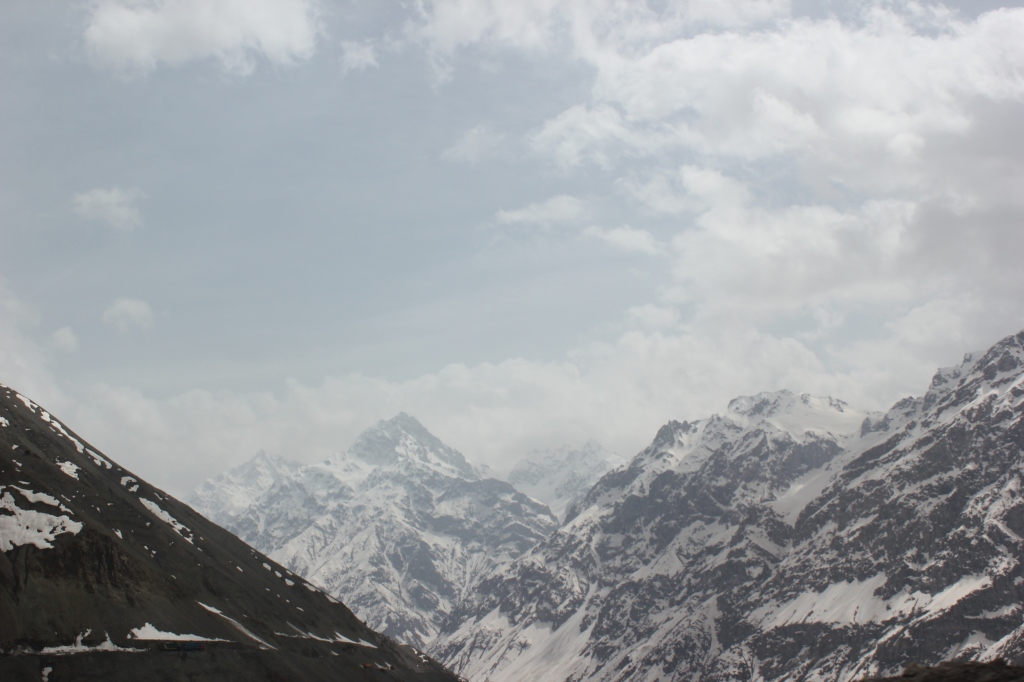It was with great excitement that I set off for Central Asia for the first time since the Spring of 2019. After a few years of global pandemic that had left me organising expeditions in Tajikistan and Kyrgyzstan which I could not be part of, it was finally time to return to the wild! Although obtaining a visa proved to be difficult due to public holidays, I eventually procured one the day before my flight with a rushed trip to the Tajik embassy in London. Then as I tried to check in online, Turkish Airlines said there was a problem with my tickets. It turned out that the travel agent had not re confirmed my flights after the airline changed the timings, so I spent my last evening in the U.K. on the phone sorting this out instead of at the football with my friends as planned. Nevertheless, nothing was going to stop me getting there! I had my visa and flights and was sat in terminal 2 at Heathrow when my eVisa came through literally as boarding began for the first flight. I must be one of very few people to have obtained two Tajik visas at one time… As the wheels lifted off the runway at Heathrow, it dawned on me that this was really happening. After a brief stop in Istanbul, I finally landed in Dushanbe, Tajikistan, at 3.25am, about two years later than originally planned. Of course, I was met with confusion at the border over my visa situation, but as my broken Russian eased the problem, my visa was stamped, and I was allowed through leaving the airport with my bags. I crawled into bed at 5am, with my alarm set for 10am for the real adventure to begin.
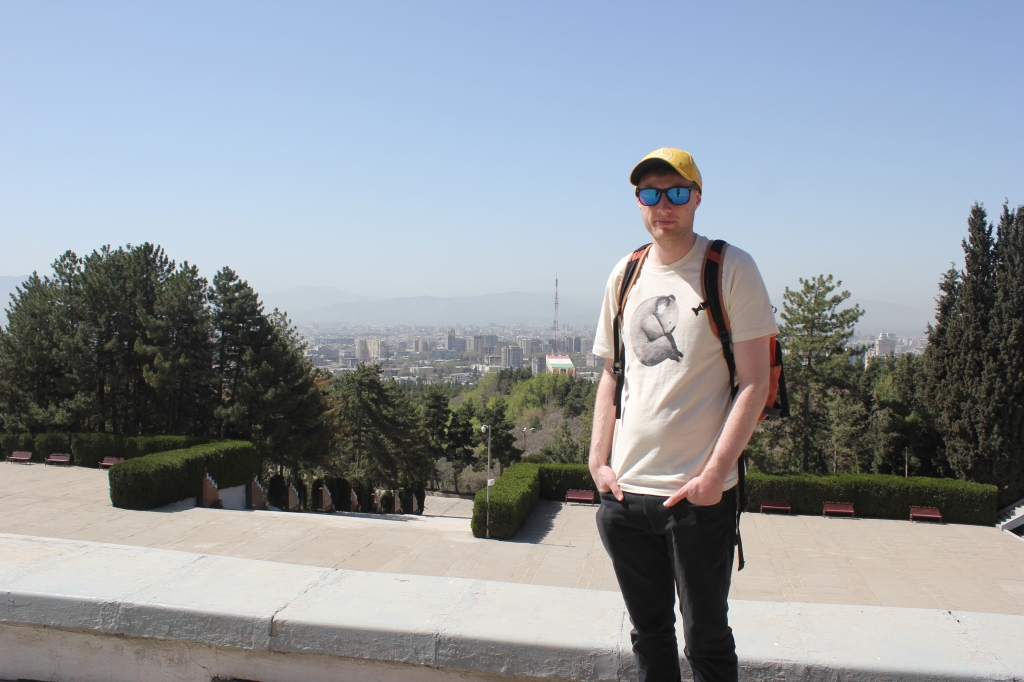
Dushanbe is a rapidly growing city with large modern buildings and an increasing number of impressive national monuments and institutions. Some of the grandest were the presidential palace, the Ismoil Somoni statue and the opera house. However, the city had a laid-back feel and as I strolled through the many well-kept parks, I found myself enjoying some much-needed peace and quiet after my journey. The vast numbers of tulips found in the gardens and along the streets certainly aided this as well as my kind guide, Solimshoh, who is part of the Tajik Fauna & Flora International (FFI) team, showing me around. Nonetheless, I was here to work, so after a lovely first day of accustomising myself to the pace of life, Ubayd, the head of FFI in Tajikistan, Dr. Mario Boboev of the Kulob Botanical Garden and myself set about planning the trip on a hot Friday afternoon. It would be a short but fascinating trip lasting eight days but covering the country from north to south. That Friday, I had beers with the FFI team to celebrate that I had actually made it to Tajikistan. Then on Saturday afternoon I found myself on the way to Kulob city, a few days after having arrived in Tajikistan, to begin the search for wild tulips.
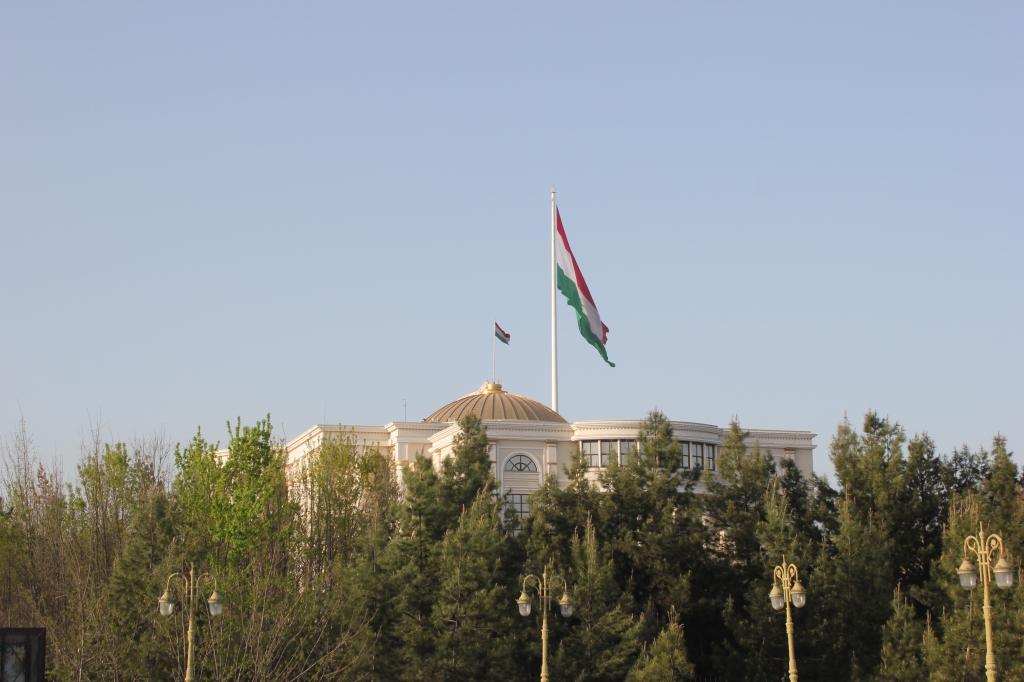
Kulob is the third largest city in Tajikistan and is in the Khatlon region in the south of the country. We crossed some pretty magnificent mountains on our way to this city, before winding through the vast open areas where cotton is grown, and as the light faded, we arrived at our destination. Mario’s brother had prepared some food for us as my team was fasting for Ramadan, so they broke their fast on arrival before we retired back to Mario’s house in the grounds of the Kulob Botanical Garden. The next day, we set out early heading about an hour north of Kulob to some hills, which I would later realise were small mountains. Climbing up from a small village in the valley bottom we rose to the rolling hills and pastureland at the top and stumbled across the flowering Tulipa maximowiczii, currently not thought to be a true species, but a synonym of Tulipa linifolia. Despite this, its remarkable red flower with distinct blotch were a great spectacle. We also found a few flowers of the large red flowering species Tulipa praestans as well as some evidence of Tulipa subquinquefolia, whilst being beadily watched by a circling eagle. Not a bad first day.
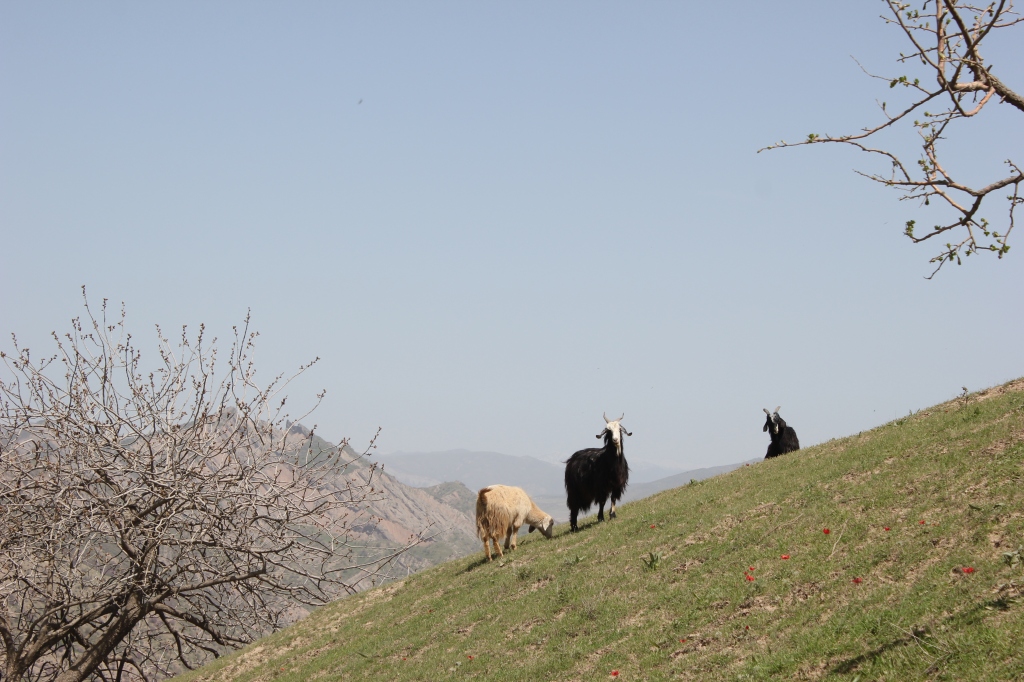
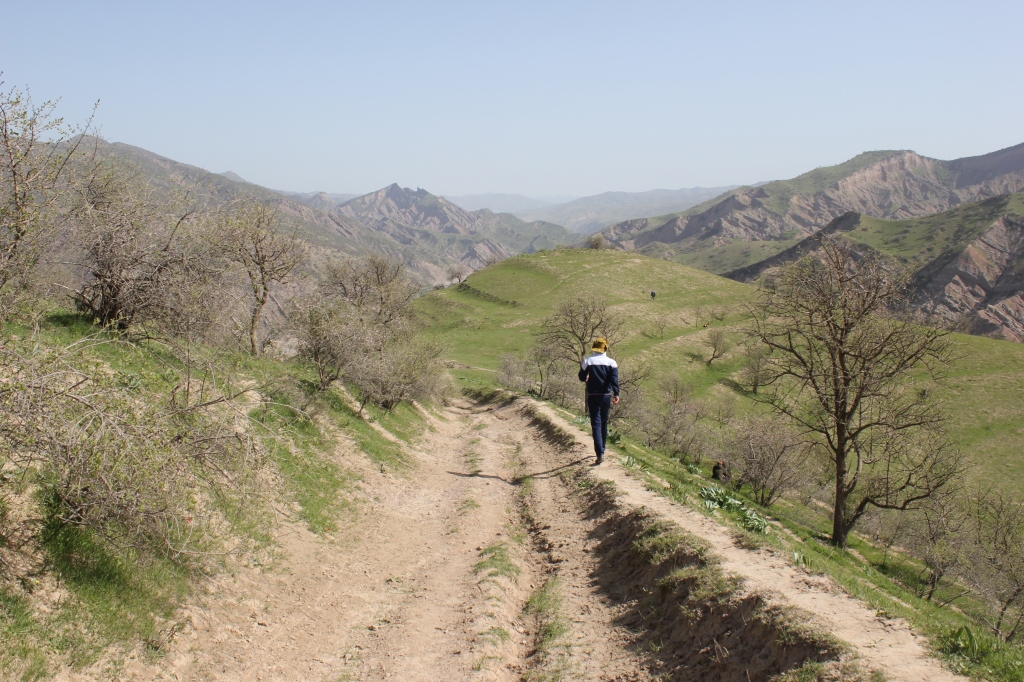
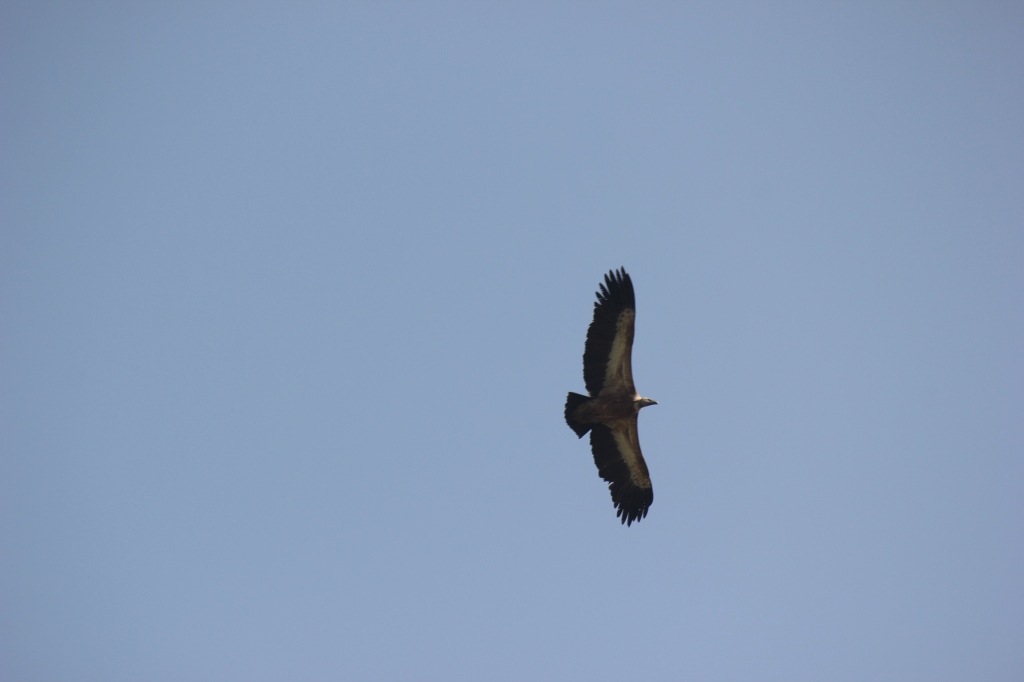
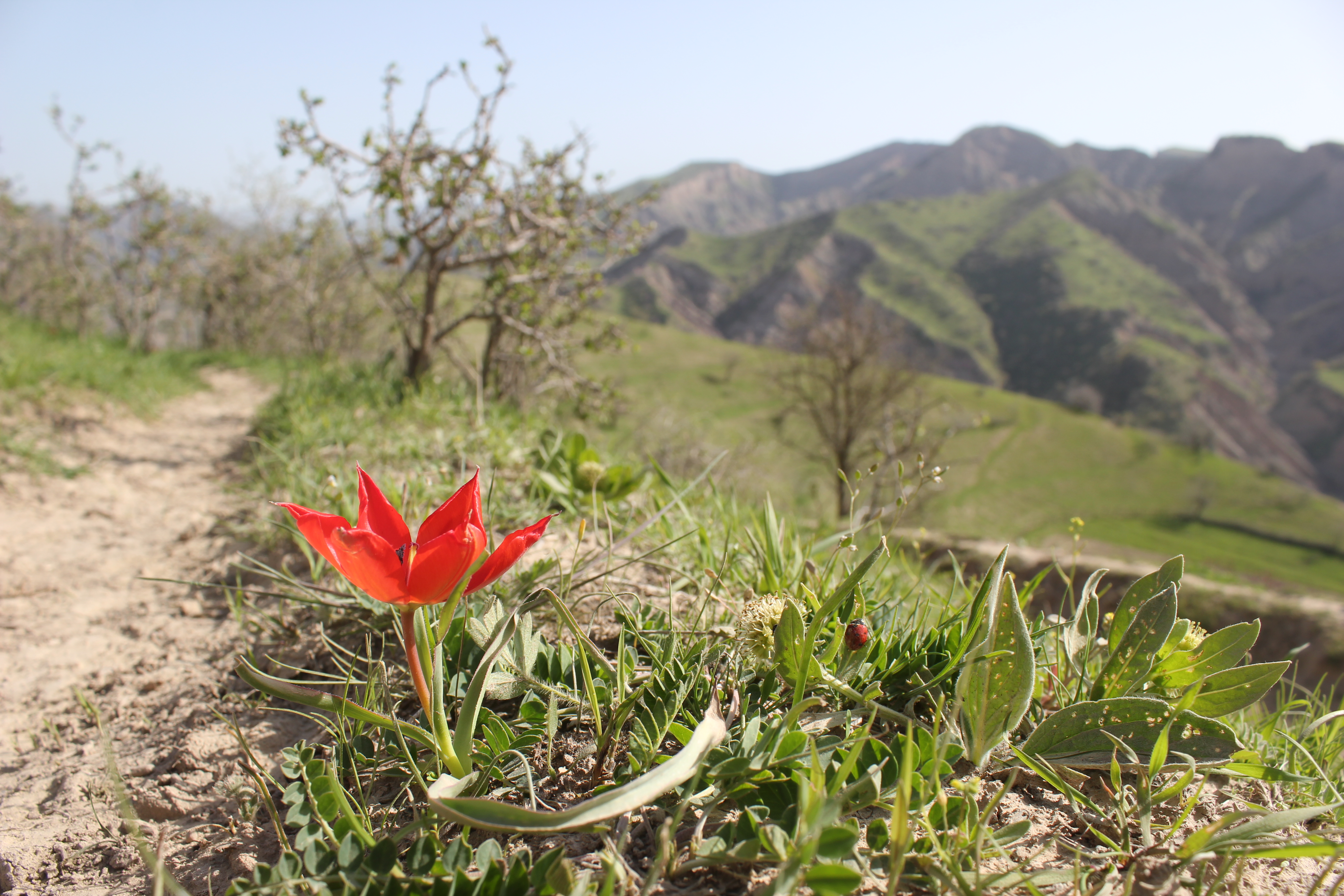
On the second day we drove to the Darvoz region, skirting the border of Afghanistan and dominated by huge mountains and deep valleys. It took us nearly three hours to reach the valley where we were going to explore, but this flew by as I watched Afghans going about their lives on the other side of the river border, which at some points was only 50m away. We hiked up into a steep gorge with the weather becoming increasingly hot, the temperature touching 30 degrees. On our way, we found populations of the little white Tulipa turkestanica, the red and yellow flowering forms of Tulipa linifolia, and the beautiful yellow flower of Tulipa anisophylla hiding about two hours up into the gorge. As we headed back down the same gorge with the rushing water from melting snow bubbling beside us, we were treated to incredible views of the Hindu Kush Mountains of Afghanistan. Tulips truly grow in some of the most spectacular places.
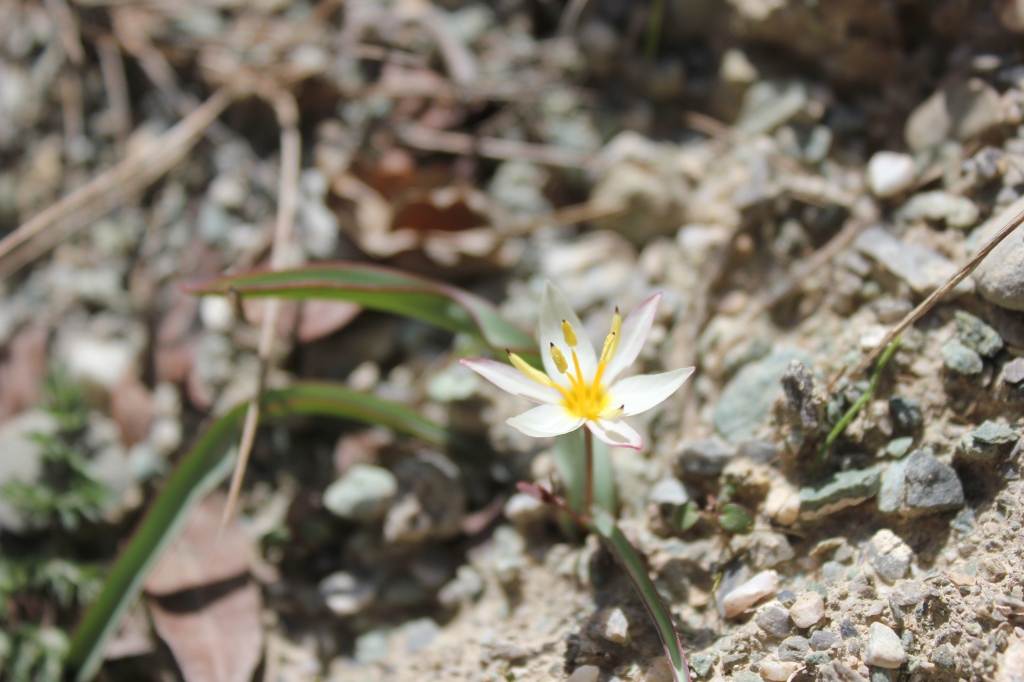
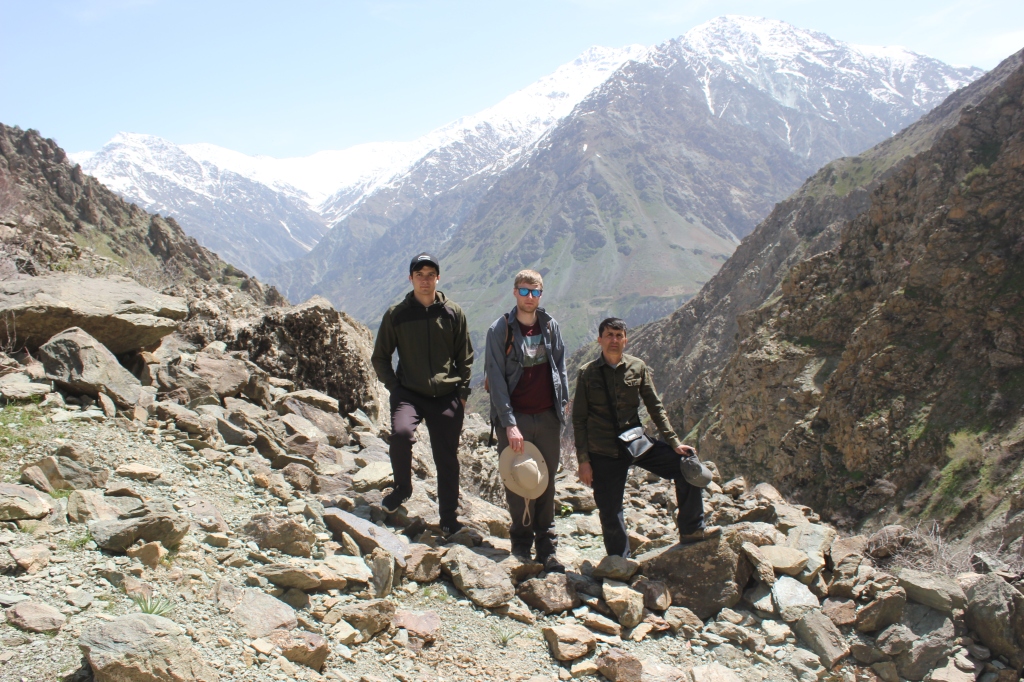
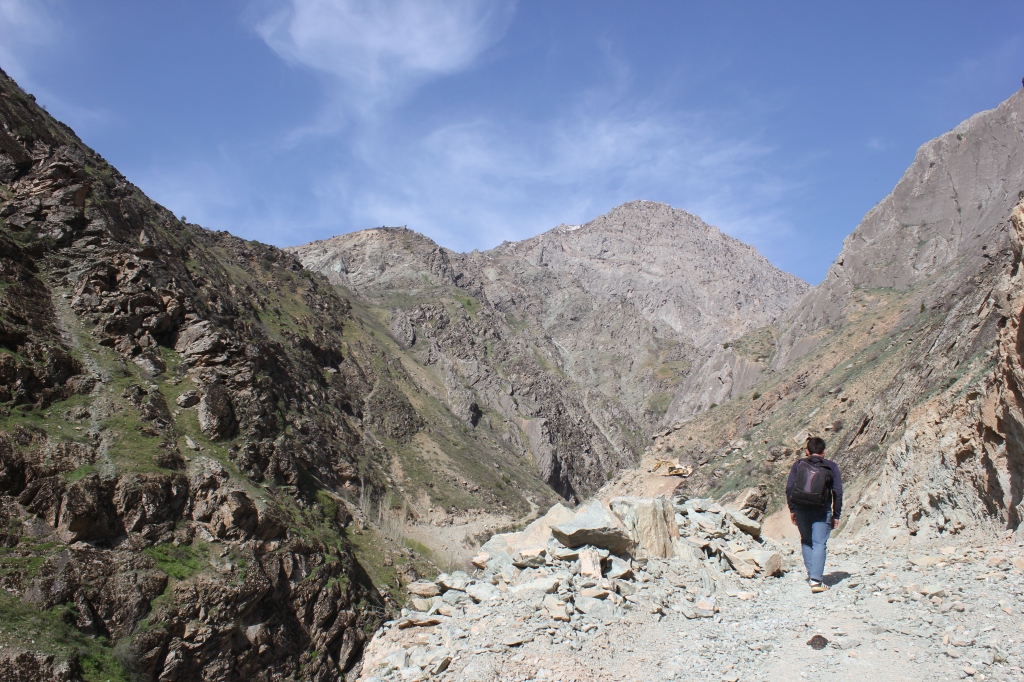
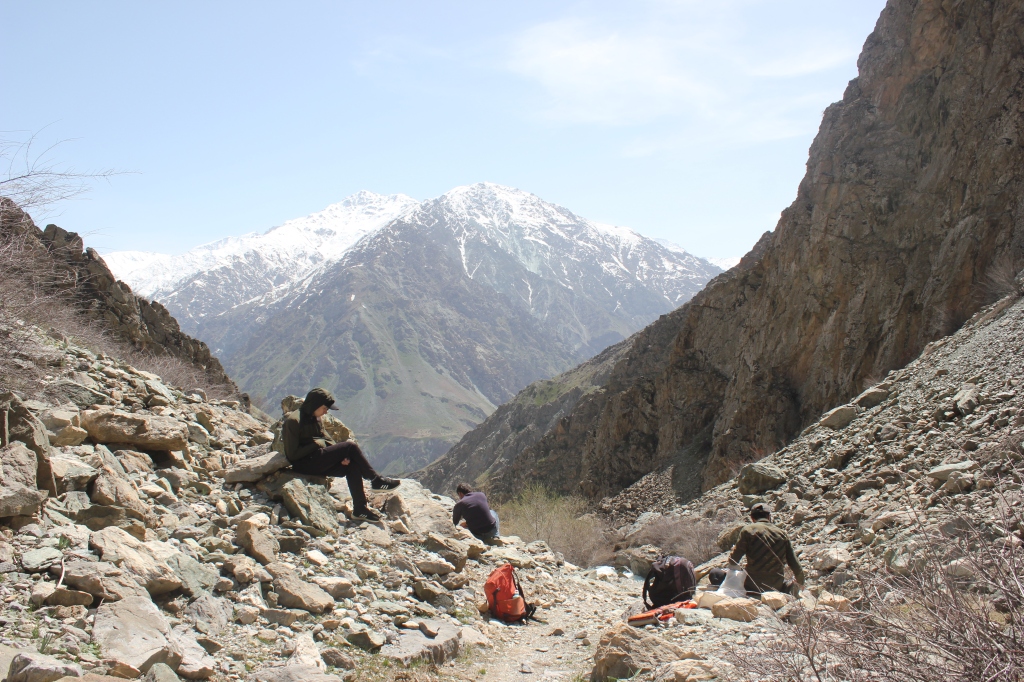
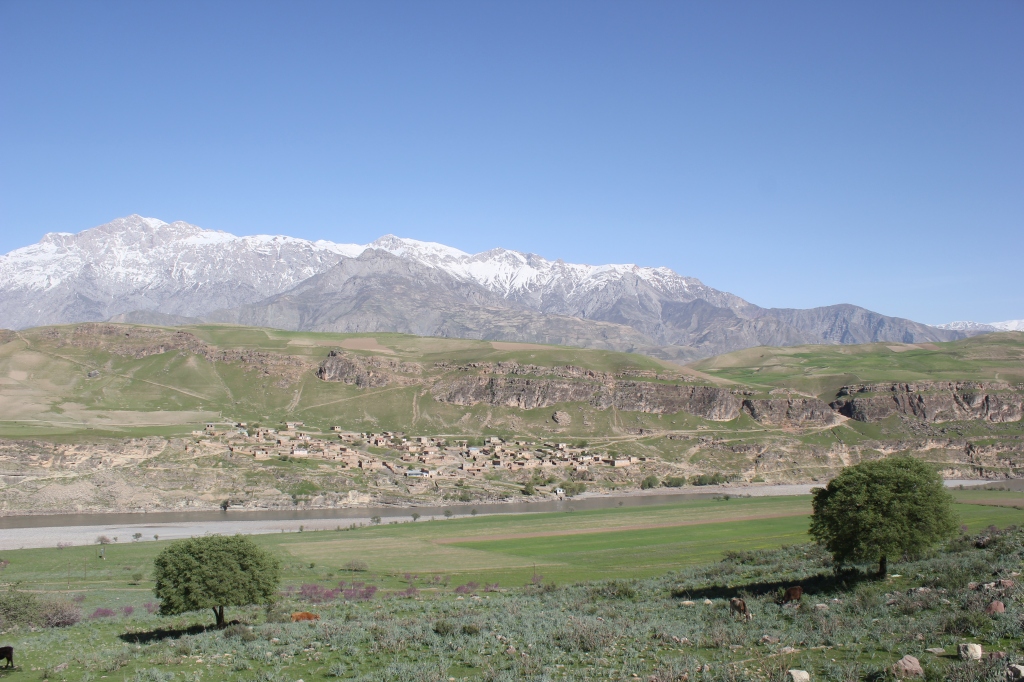
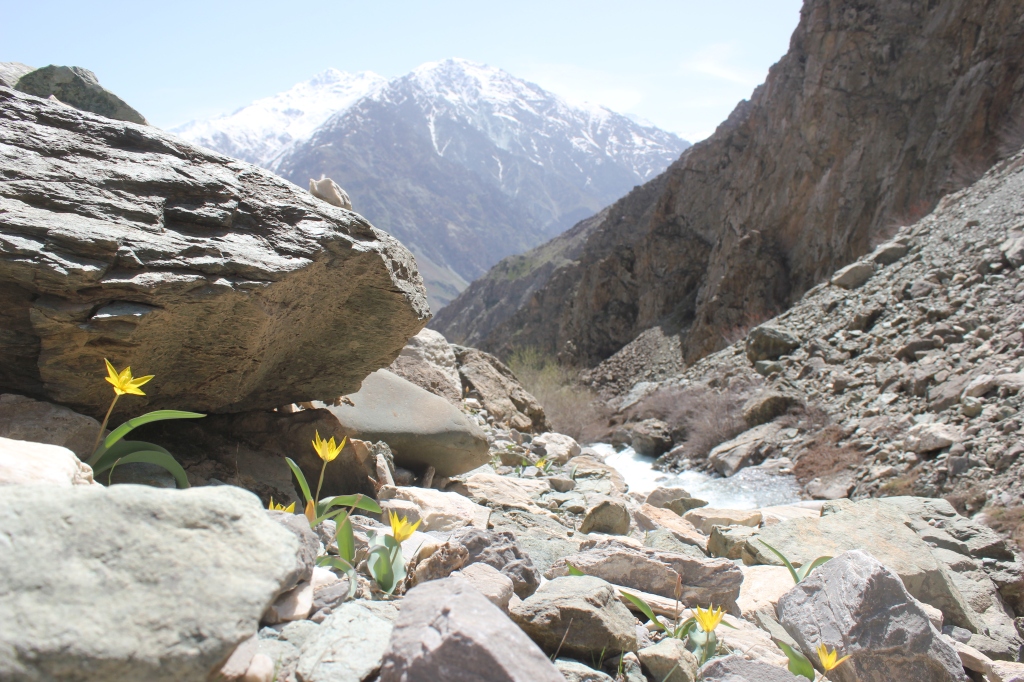
The next day we drove back from Kulob to Dushanbe stopping at Nurek reservoir and a few other points not far from the main road to record populations of Tulipa praestans, Tulipa maximowiczii, and Tulipa subpraetans (currently a synonym of Tulipa praestans). Some of the populations appeared to be doing well and the highlight was definitely the populations on a slope overlooking the Nurek Reservoir, which was such a deep cool blue in the hot spring sun. Arriving in Dushanbe we rested for half an hour before setting off towards the north of the country following the Varzob river up into the Varzob valley through the Zarafshan range of mountains and then through the Turkestan range before descending into the flat, dry Fergana valley area. We arrived in the dark and immediately set about refuelling ourselves after covering a significant distance.
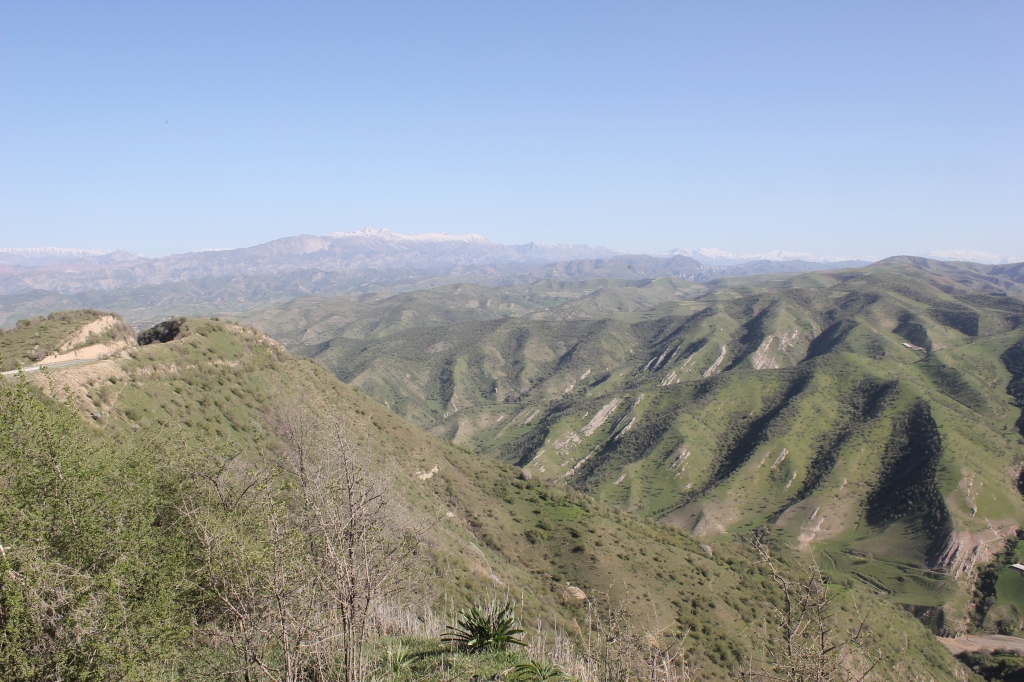
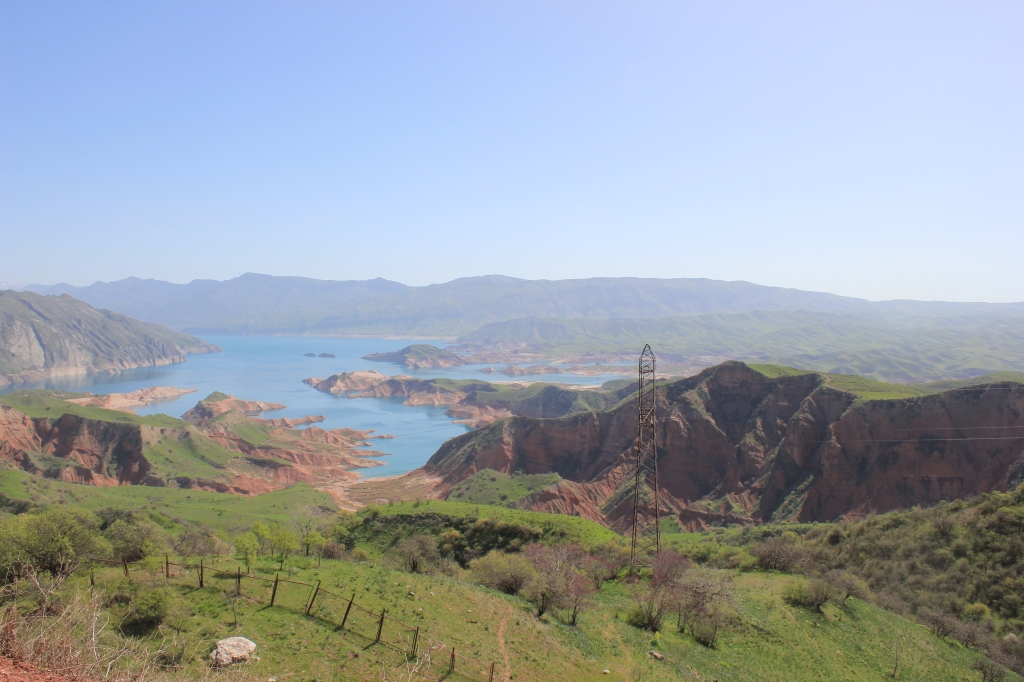
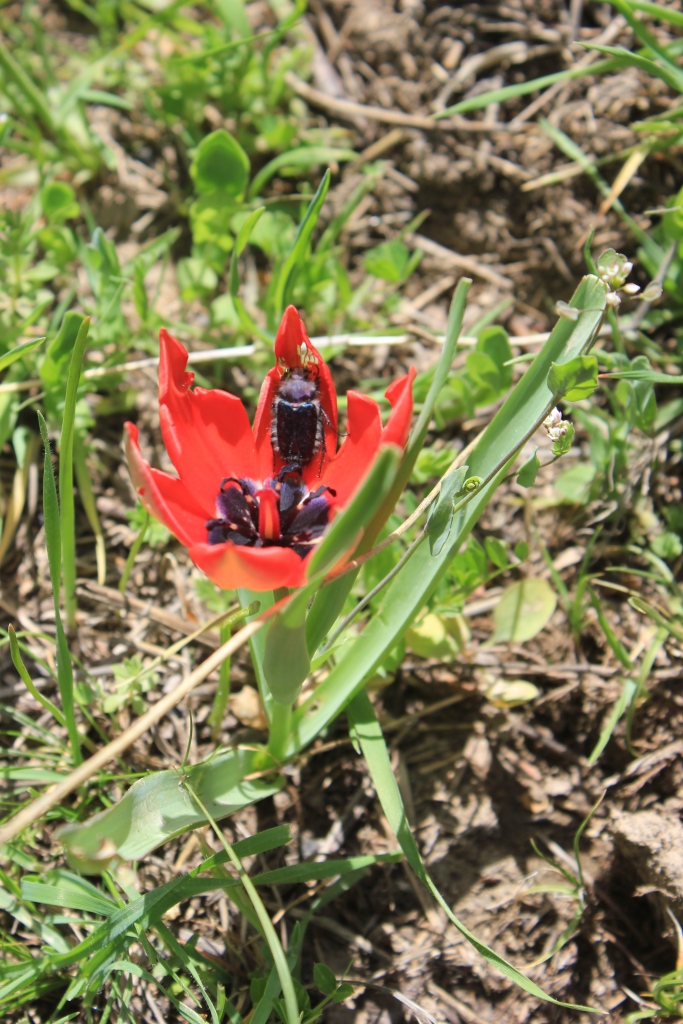
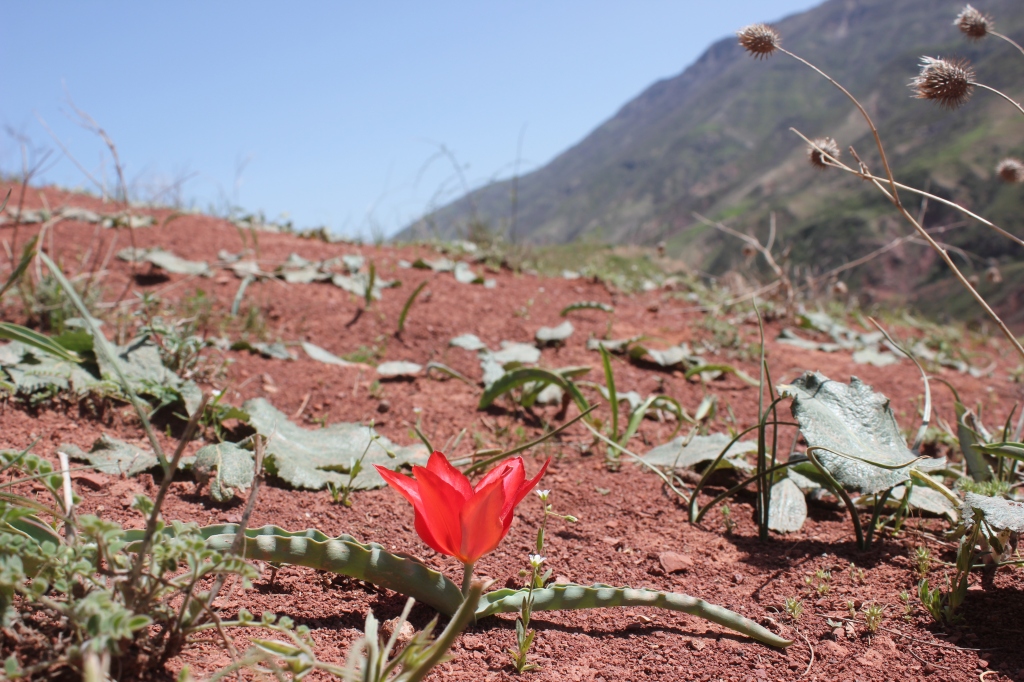
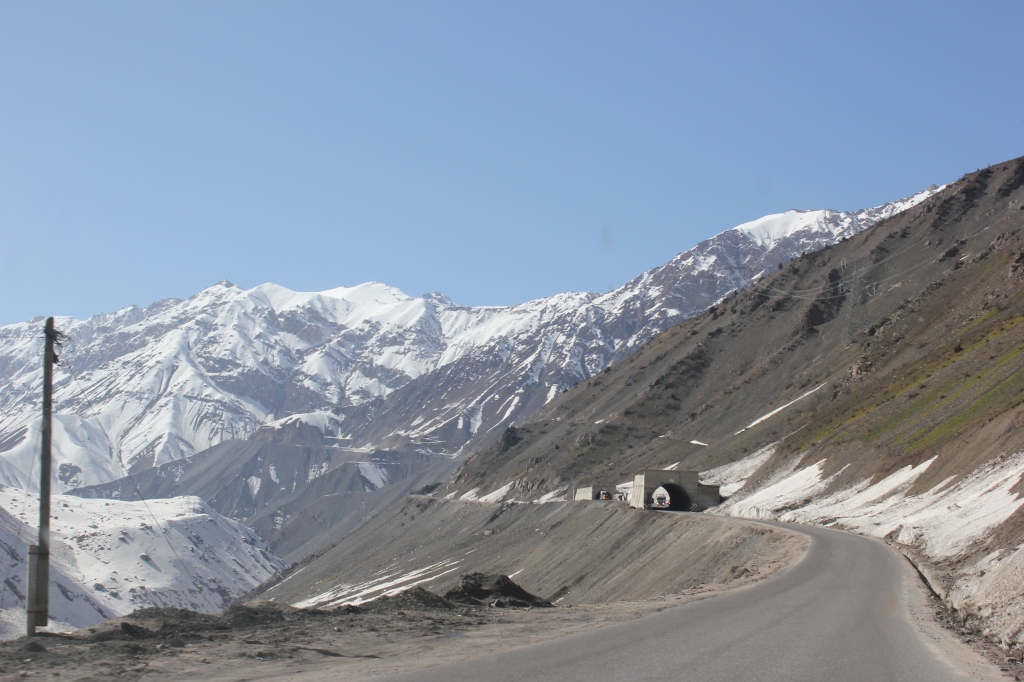
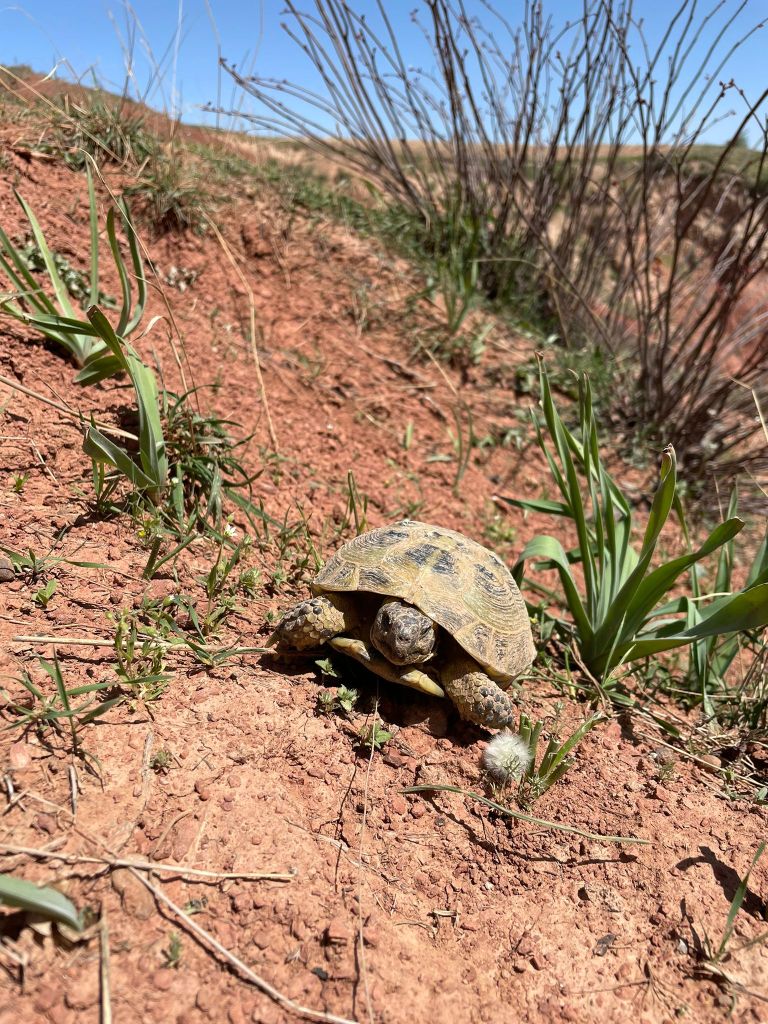
We spent three full days in Khujand visiting the city, the University and its herbariums, as well as the Kurama ridge, the Mogoltau mountains and the vast open semi-desert areas in the very north of Tajikistan. This is the second largest city in Tajikistan and is the furthest north that Alexander the Great ruled in the region. Visiting the reconstruction of the old fortress was interesting, but we were really here for the tulips. We certainly found quite a few different species, many of which occur in the neighbouring countries of Uzbekistan and Kyrgyzstan as this area has extremely complex borders that are never that far away. In the Mogoltau range, we found Tulipa mogoltavica, a synonym of Tulipa greigii, while in the vast open areas and the fringes of the Kurama mountains we found Tulipa korolkowii and Tulipa lehmanniana, then further into the Kurama range we found Tulipa kaufmanniana. There were incredibly desolate areas where the stony dry ground provided very little protection from the sun, but even here we found some hardy tulips growing. Others were growing in the more forgiving cooler climates in the foothills of the mountains, but on some pretty steep slopes.
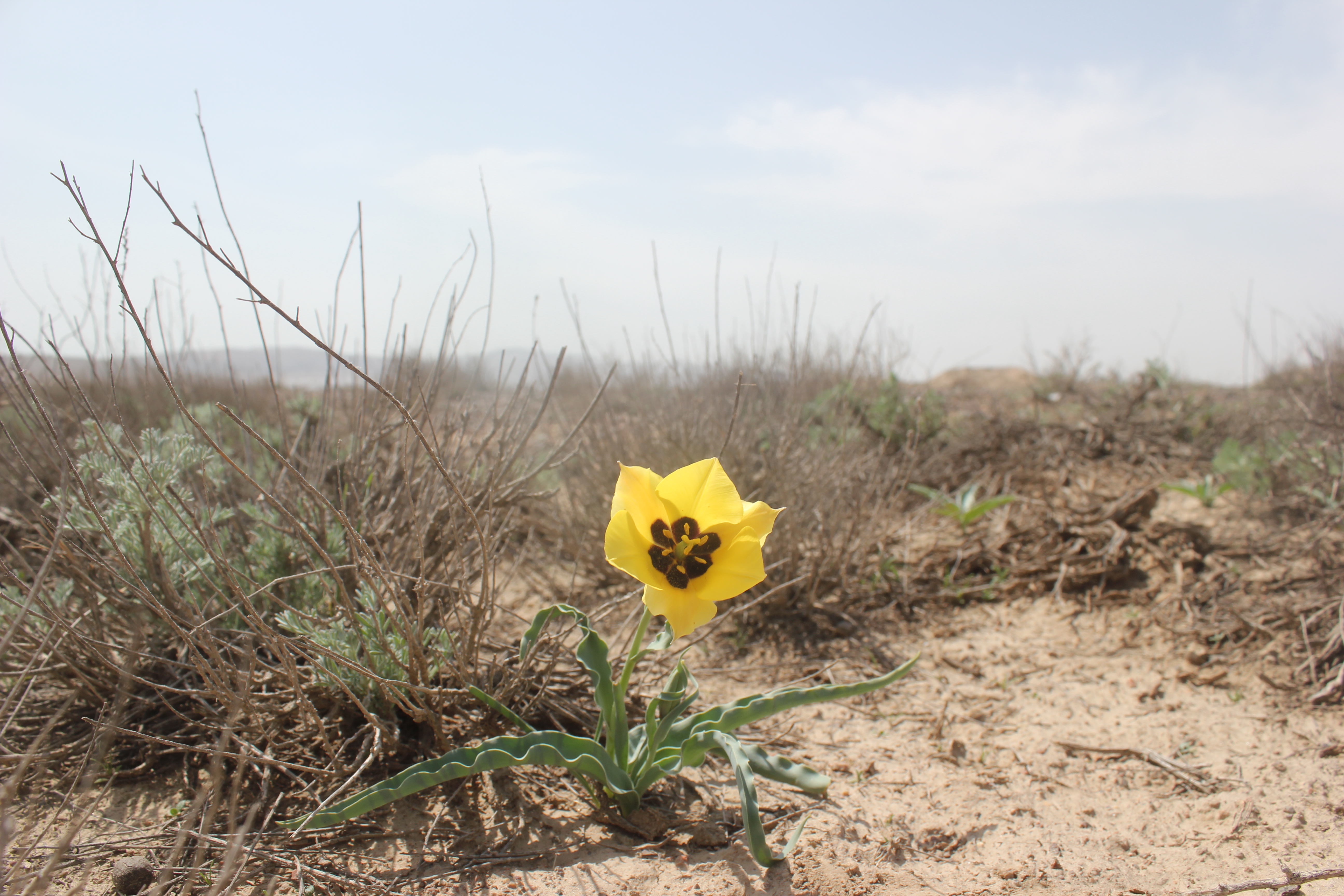
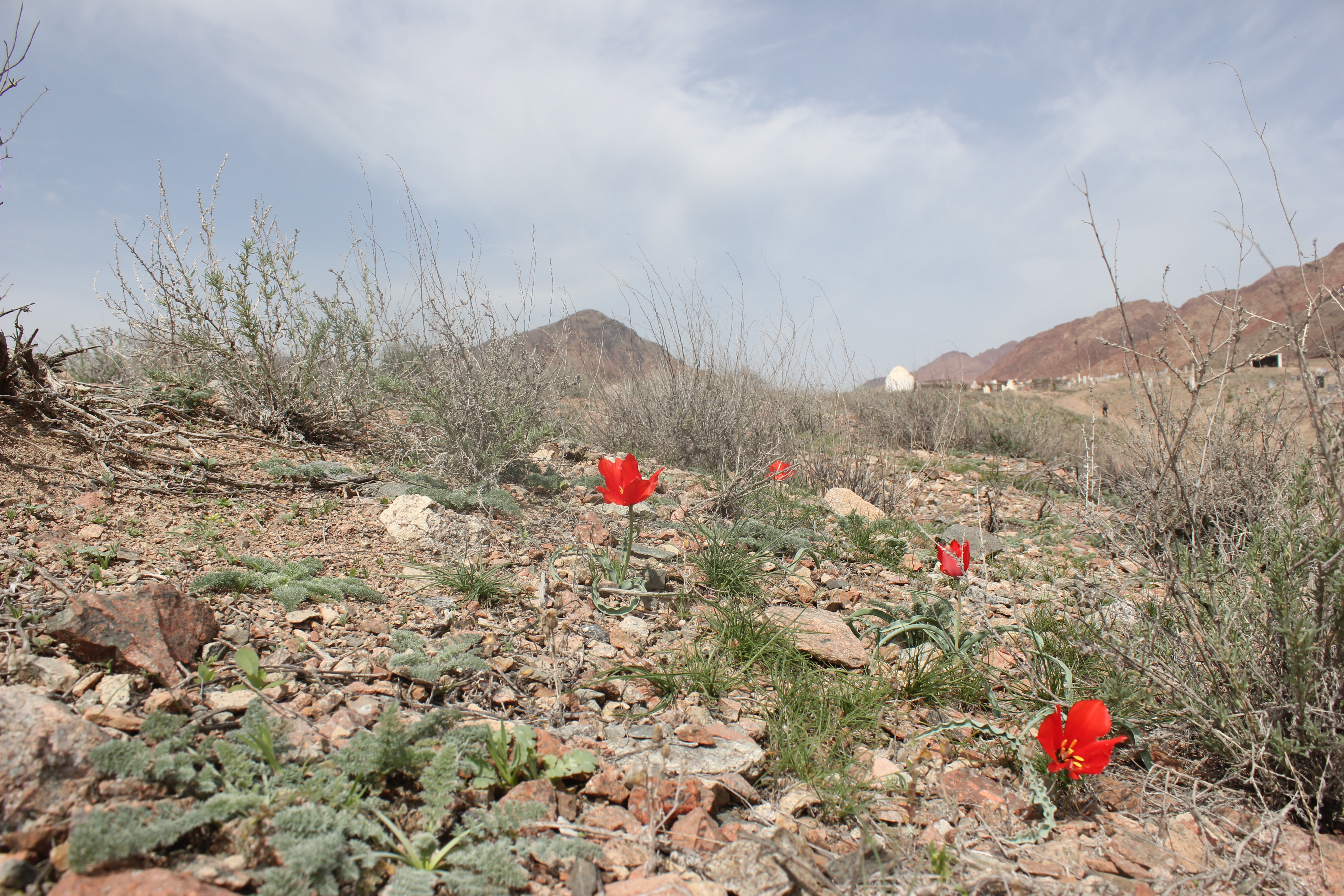
On the eighth day we drove from Khujand to Dushanbe, winding our way back up and over the extraordinary mountains and through some long, dark tunnels. The snow was clearly melting, and the rivers were flowing quickly with lots of water whilst the traffic flowed in a much slower, meandering fashion. Dropping into some valleys we saw little bustling towns where life appeared normal, but in winter these areas are often cut off for months at a time due to snow. We arrived back in Dushanbe mid-afternoon, and I said goodbye to Mario, his son who drove us, and the other botanic garden staff member. Ubayd then collected me, and we went for dinner and a few shots of cooling vodka. So it was, I spent my final evening talking about Tajikistan, its complicated past, current difficult situation and its potential future. As I stepped onto the plane the next day, I thought to myself that this land of mountains is truly like nowhere else I have ever been before. I hope our work can help protect some of the native flora that makes this place so special. Thank you, Tajikistan, and to everybody who made this trip possible.
